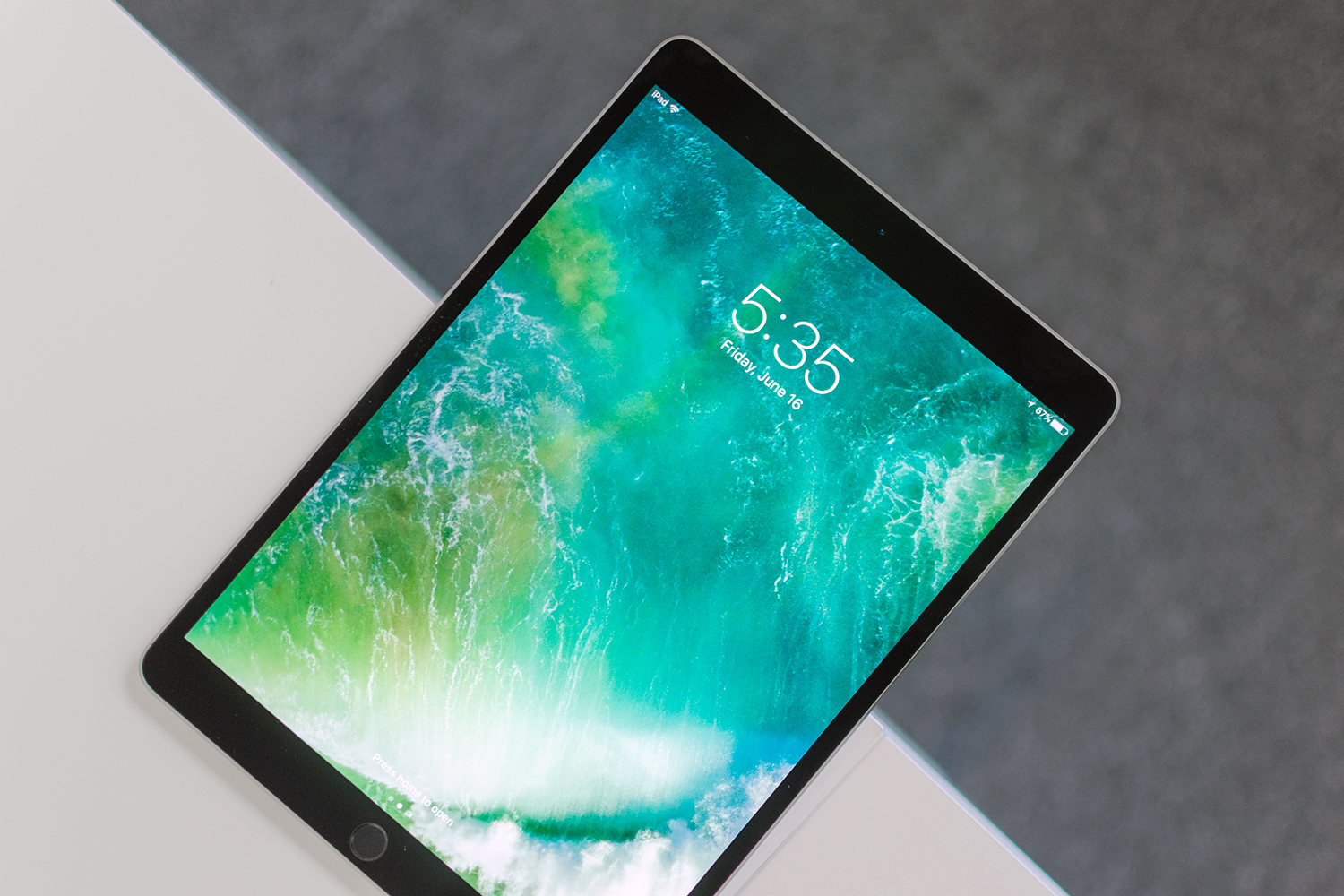
You shouldn’t compare apples to oranges, but with Microsoft recently revealing the Surface Pro 6, you’re probably wondering how it stacks up to something like the iPad Pro. As much as these products come from different perspectives on computing, they aren’t so dissimilar in price and design.
With this comparison guide, we consider both our reviews of the iPad Pro and the Surface Pro 6, helping you find out which one is worth more for your hard-earned cash.
Design

The Surface Pro 6 and the iPad Pro are on opposite ends of the design spectrum. Apple opts for an aluminum material, but Microsoft goes with magnesium. That makes for a difference in weight, with the iPad coming in at 1.57 pounds, and the Surface Pro 6 at a slightly heftier 1.71 pounds (without the keyboard).
Asides from the weight, there’s another key differentiating element to the two devices: The kickstand. The Surface Pro 6 has a fully articulating kickstand with movement up to 165 degrees, whereas the iPad depends on cases or keyboard covers to stay propped up. For when you want to use the devices in a laptop-like mode, the kickstand on the Pro 6 makes the big difference. Keep in mind that the keyboard and cases are separate purchases in both instances anyway.
As for that display, both Apple and Microsoft manage to pack plenty of pixels in for your viewing pleasure. Apple’s 12.9-inch display gets you a resolution of 2,732 x 2,048, with a pixel density of 264, and Microsoft’s slightly smaller 12.3-inch display gets you a resolution of 2,736 x 1,824 with a pixel density of 267. The Surface Pro 6 wins out in pixel density, but in terms of design, these two tie as some of the most premium-feeling devices you can buy.
Performance

Coming down to performance, the differences boil down to the different operating systems and chipsets. Apple’s iPad Pro runs iOS 12, and the Surface Pro 6 is powered by Windows 10. There are different configurations on both devices for more performance or storage space. Starting at $900, the Surface Pro 6 comes with a quad-core eighth generation Intel Core i5 or Core i7 Processor, 8GB or 16GB RAM, and up to 1TB of storage. We reviewed the Surface Pro 6 with an Intel Core i5-8250U, which is now the base model which you can find for cheapest at the Microsoft Store.
On the other hand, the WiFi-based 12.9-inch iPad Pro comes with 4GB of RAM, 32GB, 128GB, or 256GB of storage, an A10X chip with 64‑bit architecture, and embedded M10 co-processor. Prices there start at a lower $800, making the iPad Pro a bit more enticing. No need to worry about choosing a processor or RAM, Apple just makes it easy with one chip.
Enticing as it is, iOS 12 on the iPad still is more of a mobile phone OS, whereas the Windows 10 on the Surface Pro 6 can run full-blown photo and video editing software. Both platforms have benefits, with different strengths depending on the use case. While Windows 10 is a superior multitasking platform, iOS as a lot of great apps populate the App Store for tablet usage.
Both devices also come with options for a pen, or in Apple’s case, a pencil. These stylus’ aren’t included in the price of the devices and will count as a separate purchase. Specs considered, Apple Pencil and the Microsoft Surface Pen both accomplish the same inking and drawing tasks and work well across their OS. There are a few subtle latency differences and other specs differences between the two, but Apple doesn’t specify the sensitive levels on their pen to dive deeper. It’s still a nice bonus to have if you’re considering either one of the tablets.
Portability

Both the Surface Pro 6 and the iPad Pro are equally portable devices, but the iPad ultimately wins. The iPad Pro measures 12 x 8.66 x 0.27 inches, and the Surface Pro 6 at 11.5 x 7.9 x 0.33 inches. The iPad Pro is a bit longer, but it wins with the weight. It might be hard to hold in one hand, but being so light, it is easy to throw in a bag and travel with.
The battery life on the iPad Pro is also impressive, as we found that it gets up to 10 hours in our review tests. On top of that, iOS devices have fantastic standby time. As for the Surface Pro 6, Microsoft promises 13.5 hours of battery life, and in our tests, we got nine and a half hours in our web browsing benchmark and a little over 14 hours when in a video loop.
For connectivity, the iPad only offers up a single proprietary Lightning Port. This means you’ll need to buy official Apple dongles to connect your iPad up to monitors and even printers. Things are different with the Surface Pro 6 though, which gives you mini-Display Port and USB 3.0. Those aren’t the most forward-looking ports, but provide more options for connecting accessories like monitors or mice. It’s a pretty fair fight in this category, but in the end, the iPad Pro is the device you’ll be more likely to bring with you on the go.
For most people, the iPad Pro is the winner

At the end of the day, the iPad Pro is the better buy over the Surface Pro 6. It is a cheaper device, and the display and the portability are just about the same as what you get the Surface Pro 6. iOS is also much more intuitive than Windows for tablet usage, offering a wider selection of apps at your disposal. If you’re an iPhone user, connectivity between the two devices is an added bonus.
So, while the Surface Pro 6 is the better laptop replacement, the iPad Pro does more things right on the whole.


